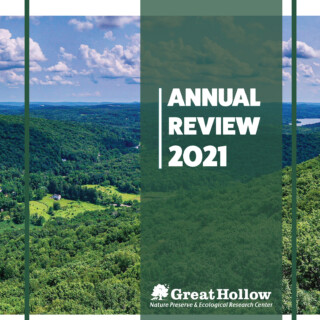
New Publication on the Impacts of Mercury Pollution to Migratory Birds
Migratory birds have been called the super-athletes of the animal kingdom because of the remarkable endurance they display during hours-long, non-stop flights that can span thousands of kilometers. Their endurance is made possible by several unique physiological adaptations that allow birds to fuel long bouts of high-intensity exercise with fat rather than less energy-dense and less storable carbohydrates on which humans and other mammals rely. New research led by Great Hollow and published in the journal Scientific Reports has found evidence to suggest that a globally ubiquitous pollutant, methylmercury, may be hindering the ability of birds to burn fat rapidly enough to sustain migratory flights and also promptly replenish those fat stores during stopovers. Today, global mercury emissions are approximately 450% greater than pre-industrial levels and represent a well-documented threat to human and wildlife health, but mercury’s effects on the metabolic processes underlying migration had never been studied before.
The study’s authors, including Great Hollow’s executive director Dr. Chad Seewagen and collaborators from UMass-Amherst, Guangxi Normal University (China), and the University of Western Ontario (Canada), analyzed tissue samples from yellow-rumped warblers that were previously found by other researchers to have weakened flight endurance in a wind tunnel as a result of only short-term exposure to a concentration of methylmercury even lower than that which is found in a can of tuna fish. To investigate mechanisms by which the methylmercury may have caused this reduction in flight endurance, the researchers measured multiple markers of fat metabolism in the birds’ breast muscles, including catabolic enzymes, fatty acid transport proteins, and lipid metabolism regulators knows as PPARs. They measured the same markers in the birds’ livers to also assess the livers’ energy costs and capacity to synthesize and package fat for storage during stopover refueling.
The researchers found mercury-exposed warblers to have significantly lower muscle aerobic and fatty acid oxidation capacity, elevated liver energy costs, lower fatty acid uptake capacity in the liver, and lower liver expression of PPAR-γ (a regulator of key enzymes that birds increase during migration to facilitate rapid fat storage). The diminished muscle oxidative enzyme capacity of the mercury-exposed birds likely contributed to their weaker flight endurance in the prior study, while the effects on the liver have potential to inhibit stopover refueling.
“What we have shown is that fat catabolism, synthesis, and storage pathways in birds can be disrupted by only brief and relatively low exposure to this widespread contaminant, which is likely to have significant consequences for migratory performance,” said lead author Chad Seewagen. “This concerns me that global mercury pollution is making the deadliest event in the life-cycle of migratory birds even more difficult for them to complete alive and on time. What’s more, birds in many parts of the world are exposed to much higher levels of mercury and for much longer periods than those in our study, so the effects of mercury on migrating birds could actually be even greater in the wild. Considering the influence that migratory performance ultimately has on bird population sizes, we think it should be a priority in conservation to better understand and mitigate the impacts of contaminants like mercury on the survivorship of migration.”
For further reading, the full journal article can be accessed here.
Seewagen, C.L., C.R. Elowe, A.R. Gerson, D.J.E. Groom, Y. Ma, M. Yildirim, and C.G. Guglielmo. 2022. Short-term mercury exposure disrupts muscular and hepatic lipid metabolism in a migrant songbird. Scientific Reports 12:11470.

 Previous Post
Previous Post Next Post
Next Post